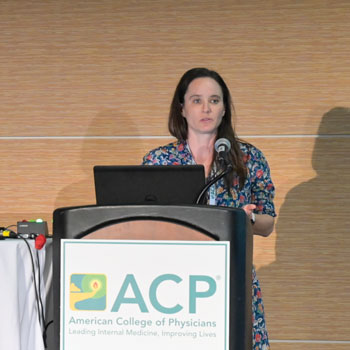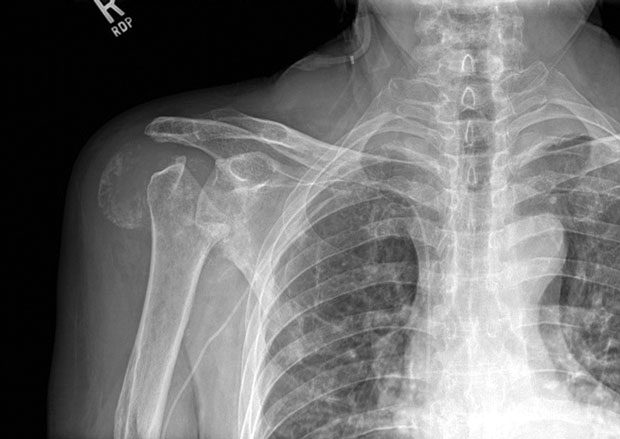Troubleshooting tips for cervical cancer screening
Two experts advise physicians on cervical cancer screening, dealing with issues from sampling technique to confusing guidelines.
It's understandable to be confused about cervical cancer screening recommendations, Pelin Batur, MD, MSCP, FACP, reassured Internal Medicine Meeting 2024 attendees at a session on Pap testing.
Dr. Batur, an internal medicine physician, women's health specialist, and professor of OB-GYN and reproductive biology at Cleveland Clinic Lerner College of Medicine of Case Western Reserve University in Ohio, showed a chart with all the recommendations for different age groups and from different societies and panels combined.
"This took me a hot minute to make, because it does get confusing," she said. "And that's what internists pride themselves on—we follow guidelines. When they're confusing, it's really frustrating."
In broad strokes, testing for human papillomavirus (HPV) is only recommended for patients ages 25 years and older, and whether to do so is flexible in those ages 25 to 29 years. For older patients, expert societies differ more significantly on the frequency of testing and how to combine HPV and Pap tests, noted Dr. Batur, who encouraged attendees to just choose one group's protocol to follow.
"Pick whatever you want, and then stick to it," she said.
But don't forget the cases where the guidelines don't apply. "These are the situations where people do fall through the cracks," said Dr. Batur. Patients need more frequent screening if they have HIV, were exposed to diethylstilbestrol (DES) in utero, or were previously treated for cervical interepithelial neoplasia (CIN) 2 or 3 or cervical cancer, among other factors.
Anyone who is immunosuppressed is also at higher risk and should be screened more often, so remember to check what medications a patient is on. "This is one of those questions that we would all get right on a board exam, but when we're busy in clinic and we're 40 minutes behind, we forget to ask," said Dr. Batur.
She also offered troubleshooting advice on pelvic exams, starting with never telling a patient to just relax. "They know that they're supposed to relax; if they could, they would," she said. Instead, try to gently make the patient aware of a spot where she's holding tension that may affect the exam. "I say, 'I've noticed that you're building up a lot of muscle tension in your upper legs.' They know what that means, plus it helps them to practice mindfulness," said Dr. Batur.
Physicians can also make the exam easier by using a smaller speculum on most patients. "I only use a larger speculum if I can't see for whatever reason," she said. Remember to insert the speculum all the way in before opening. "The most pain receptors are in the distal third of the vagina, so the big mistake people make is that they're like, 'I don't want to cause discomfort,' so they'll insert it not deep enough," said Dr. Batur.
While you're at it, do your best to distract patients. "I often talk about my dog or weekend plans," she said. And don't forget to tell them to scoot down until their buttocks are fully off the table. "Nobody's ever down far enough," she said.
Guidelines now recommend having a chaperone present during a pelvic exam, Dr. Batur noted. "I went 20-plus years without using a chaperone and never had a problem," she said, adding that she does now bring along a medical assistant who also hands her tools.
Another common error is failing to distinguish between screening and diagnostic Pap tests. "A mammogram or colonoscopy [screening program] is the same concept. It's assuming you're not having symptoms," she said. "If they come in with bleeding, you're not going to say, 'You're up to date.'"
On the issue of staying up to date, her final tip was not to trust your electronic medical record (EMR) to tell you when a patient's previous Pap test was inadequate or positive. "Just trusting the EMR [is the] biggest mistake that I see," Dr. Batur said. "It's just one click to make sure it was an adequate specimen and that it was normal."
When she handed the presentation off to copresenter Sharon A. Sutherland, MD, MPH, the conversation returned to the challenge of changing, conflicting screening guidelines. Cervical cancer screening rates in the U.S. went down in recent years, Dr. Sutherland reported, citing a study that found 86% of women were up to date in 2005 compared to 77% in 2019.
Coverage and access are barriers, but so is confusion. "Half of women not getting screened said that they didn't know what they needed or when they needed it, and sometimes they were with a clinician in that window and it wasn't offered," said Dr. Sutherland, an OB-GYN and clinical assistant professor at Cleveland Clinic Lerner College of Medicine of Case Western Reserve University in Ohio.
Certain groups are particularly likely to be underscreened, including patients who are LGBTQ, Asian, or from rural areas, she reported. There are also concerning statistics about race. "Black and Hispanic women in particular are showing an increased incidence of cervical cancer with each passing decade" of patient age, she said.
The trend starts toward the end of the reproductive years and likely relates to lack of health care coverage. "We know that after childbirth, some women will be phased out of government insurance and will not opt back in until they hit 65," said Dr. Sutherland.
Lack of regular screening can also be tied to the dire cervical cancer outcomes currently seen in the U.S. "In general, cervical cancer diagnosis now has a 33% mortality rate within five years, the reason being many of them are presenting in later stages," said Dr. Sutherland.
If a patient hasn't been screened for a while and comes in after becoming Medicare-eligible, you should screen them for a decade prior to stopping, she advised. In general, the rule for low-risk women is to stop screening after age 65 years if three consecutive Paps or two consecutive Pap/HPV tests have been negative within the previous 10 years.
That rule doesn't apply to higher-risk patients, including those with immunosuppression or previous CIN 2 or higher results, the speakers noted. These patients should continue with screening.
Don't forget that a Pap only counts if it provides a satisfactory specimen. "What to do about the unsatisfactory Pap? It happens to all of us," said Dr. Sutherland. A 2024 guideline update from the American Society for Colposcopy and Cervical Pathology calls for cytology to be repeated as soon as convenient, and no later than four months.
"In general, we don't say, 'Oh, don't worry, we'll catch it next time.' You really want the patient to come back," she said.
Dr. Batur offered a few of her top tips for avoiding an unsatisfactory specimen, including using a separate spatula and endocervical brush, not using only a spatula in a liquid sample, and being careful about lubricant. In general, lubricant should be avoided, but in cases where it's needed, make sure to have a brand that works with Pap testing machines.
"Every few years, all of a sudden, I'll start getting these unsatisfactories," she said. "Somebody in the supply chain ordered the wrong lubricant."
Finally, Dr. Sutherland did a quick run-down of Pap findings that should lead a patient directly to colposcopy, starting with atypical glandular cells. "Atypical glandular cells sounds pretty benign, right?" she said. "It can be bad." That finding typically requires colposcopy and endometrial biopsy.
ASC-H, or atypical squamous cells, cannot exclude high-grade squamous intraepithelial lesion, is another to worry about. "Every week, I see at least three or four of these, where when the clinician reads the Pap, they misinterpreted it," said Dr. Sutherland. Patients who are positive for HPV 16 or 18 should also be referred, regardless of their Pap result.
If that sounds like a lot to remember, both speakers recommended an app from the American Society for Colposcopy and Cervical Pathology to guide your screening and referral pathways through the maze of guidelines.
"I do over 500 colposcopies a year. I use this app every single day," said Dr. Sutherland. Remember, of course, that an app does not replace clinical judgment, she added. "Above all, follow your gut."




